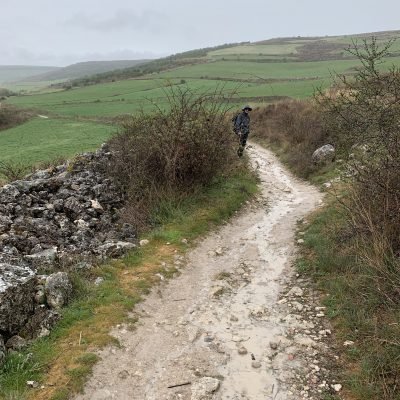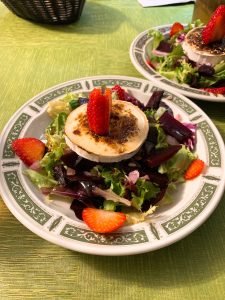Accommodation along the Camino.
There are usually a few albergues to choose from, but some smaller villages might only have one albergue. In bigger villages, you can find hotels and hostels with private rooms and bathrooms.
Some albergues let you reserve a bed beforehand, but not all of them. Albergues usually have bunk beds and there could be anywhere from 3 other people in your room to 70 or 80 other people in your room. You won’t always get a hot shower.
There are 3 main types of albergues: religious, municipal and private. Religious albergues are often donation based. Municipal albergues are large, cheap hostels run by the local government (around €5-€8) and private albergues are often the smallest and most comfortable, though usually also the most expensive (€10-€15).
What is Semana Santa?
Semana Santa, or Holy Week, is the week before Easter in Spain. Each region in Spain commemorates Semana Santa a bit differently, but the main purpose is to pay tribute to Jesus Christ’s suffering on the cross. It is one of the most important festivals in Spain.
Day 2 – Walking in Rain and Mud
We woke up at around 6:30 in the morning. That’s when pilgrims usually wake up. Often the albergues will offer breakfast for around €3-€5, which is usually coffee with toast or cereal. If the albergue doesn’t offer breakfast, there will usually be a bar or cafe somewhere that is open early where you can get coffee and a croissant.
The weather on Day 2 wasn’t good. It rained the whole morning and afternoon. The Camino’s dirt paths become nastily muddy on rainy days. The shoes we wore weren’t waterproof, so they were soaked right through within the first hour of walking.

We stopped by a restaurant called Fuentestrella for lunch at around 12:00, which is earlier than Spanish lunch hours, as Spanish people usually have lunch at around 2:00 in the afternoon. The chef at the restaurant was vegetarian, so they had vegetarian options, which was lucky for us as we are vegetarian. It was easily the best meal we had on our Camino.


We didn’t get to Castrojeriz until late afternoon. The rain and mud slowed us down considerably. The first two hotels we went to were fully booked. The third hotel had one last room left.
That’s when we found out about “Semana Santa”. The whole village was packed with Spanish people on vacation, and we started to worry about our accommodation for the following days to come. We tried making reservations for the next village within walking distance, but every hotel and hostel was full.
The weather forecast showed that the next day was also going to rain for a bit, and as our gear wasn’t fully waterproof, staying in an alburgue that might not have a blow-dryer wasn’t ideal at all. We had to have some place to stay for the next day.
That’s when we finally gave in. We asked the hotel if staying two nights in a row was possible and told them about our current situation. Very luckily, they had a vacancy! We were incredibly relieved to know that the accommodation was sorted out for the next day.
By 8:30 at night we were both exhausted from head to toe. My feet were aching and very sore, but luckily I didn’t have any blisters. It had been a very long day walking 20 kilometers in the rain on muddy tracks, but we decided that not booking for accommodation on Semana Santa was too risky. We mapped out the villages we were going to stay in for the rest of our Camino and made reservations for accommodation before getting some much needed rest.


